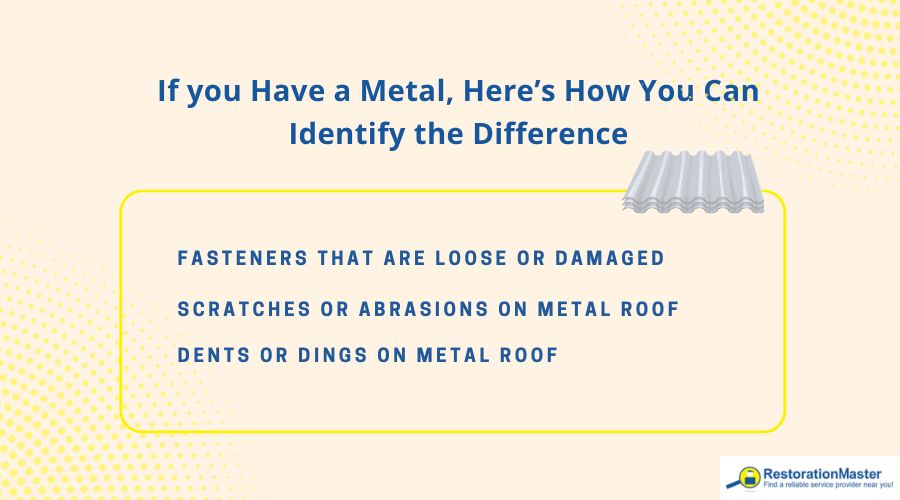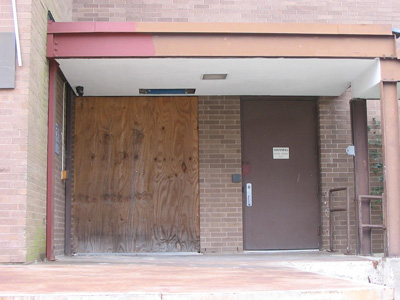What Does Roof Hail Damage Look Like?
Hail damage is typically quite visible and may appear as cracked shingles, dents, dings, or bald spots depending on your roof type. Hail can inflict significant harm on cars, homes, roofs and businesses and leave properties vulnerable to water damage, which can make the situation worse. While most hail damage is evident after a storm, sometimes it’s more subtle and varies based on the roof’s construction and materials. It’s essential to recognize signs of damage on composite or asphalt shingles, identify standard indicators of shingle damage, and inspect metal roofs for harm. Furthermore, understanding what size of hail can impact your specific roof and how to assess roof damage after a hailstorm is crucial. This knowledge will help you prevent further, potentially costly, damage.
How to Spot Hail Damage on Composite & Asphalt Shingles
Although composite and asphalt shingles are durable, they can still become damaged from hail. Always make sure to check these shingles regularly for wear and tear so you can get them fixed and prevent further costly damage.

Here are some signs that your composite and asphalt shingles have been damaged by hail:
- Visible indentations: If you’ve noticed some depressions or dimples, this may be due to hail damage.
- Black scuffs: If you have hail damage, the shingle surface may have streaky black marks on it. These scuffs can show up thin and wispy or as thick patches.
- Missing shingles: Large hail can severely damage shingles and even result in missing shingles.
- Patches that are slick or shiny: Sometimes asphalt shingles can lose the rough texture and may even look bald. If your shingles are damaged, you will notice a glossy surface almost as if they are wet.
- Marks on shingles that are soft or spongy: Shingles that have been battered with hail are likely to be softer than shingles that have not been exposed to hail.
What are some signs of damage to wood shingles?
When choosing shingles for your roof, it’s important to know that wood shingles require significant maintenanceMaintenance is the routine care, inspection, and repair of a... More and are highly susceptible to hail damage. In contrast, composite or asphalt shingles offer greater resistance to hail, potentially making them a more suitable option for your property. However, if you do have wood shingles on your roof, it is important to know how to check for signs of hail damage.
Here are the main signs of hail damage to your wood shingles:
- Splits or cracks on shingles: Check for breaks along the grain of the wood. If there are deep cracks, this can end up exposing underlayment and your roof will be susceptible to water damage.
- Indents or scuffs on shingles: Examine the shingles for any scrapes that may have penetrated beneath the surface. Such damage can be caused by hail, falling branches, or foot traffic.
- Other types of damage: Composite or asphalt shingles tend to deteriorate uniformly, unlike wood shingles which may suffer from isolated damage. Make sure to check for cracked, dented or missing shingles.
How to Spot Damage on Metal Roofs

Hail damage on a metal roof typically appears as dents. In cases of severe damage, the roof may become punctured, leading to further issues such as water damage. The following are signs of damage on a metal roof:
- Fasteners that are loose or damaged: The panels of a metal roof are secured with specialized fasteners. If the fasteners are damaged, the panels may lose stability and get water under them.
- Scratches or abrasions on metal roof: Although metal roofs are durable, they can also experience damage such as scratches and abrasions. This can be due to hail, wind, or improper cleaning. Usually, scratches are not serious damage as they are mostly cosmetic, however, if there are deeper scratches, they can rustRust is a reddish-brown oxide that forms on iron or steel du... More and the panel can become weakened.
- Dents or dings on metal roof: Hail usually causes dents and dings on metal roofs. Depending on how severe the damage is, it may just be cosmetic but if the hail was large, it may have caused larger dents which can make the panels weak and begin to leak.
What size hail causes roof damage?
Hailstones measuring 1 inch in diameter can typically cause minor damage to an average roof. However, various other factors influence the extent of damage to homes or businesses, such as the angle of the hail, the age of the roof, and protection offered by nearby trees. Generally, hail falls at speeds ranging from 9 to 25 miles per hour. Larger hailstones can reach speeds of up to 90 miles per hour, while hail during tornadoes can exceed 200 miles per hour. It is crucial to consider the wind’s impact on hail, as hail flying faster than its terminal velocity can significantly increase its strike force on a roof.
How to Check If Your Roof Has Hail Damage

Experiencing a hailstorm doesn’t necessarily mean your roof has been damaged. In most cases of hail, your roof is likely unharmed. However, as a precaution, it is important to check your roof for damage after hail. You can check your roof yourself for obvious damage, but it is usually wise to have your roof inspected by a professional who can identify less obvious damage.
If hail falls in your area, you should check your roof for hail damage as soon as possible. Ignoring potential issues could result in water seepageSeepage is the slow movement of water or other fluids throug... More, leading to moldMold is a type of fungus that grows in damp or humid conditi... More growth and water damage, which might eventually cause structural harm to your ceiling and roof.
Read: 24/7 roof leak water damage repair in Smyrna, GA. Fast tarping, dryingDrying is the process of removing moisture from materials, s... More, ceiling repairRepair is the act of fixing or restoring damaged property, m... More & full restorationRestoration is the process of returning a property to its pr... More by certified experts.
Professional Reconstruction and Roof Damage Restoration
While your roof is likely to be unharmed after a hailstorm, there is a chance that hail can cause damage to your roof, especially if the hailstones are large. Any roof damage caused by hail can cause leaks that leadLead is a heavy metal that can be toxic to humans, especiall... More to bigger issues like water damage, moldMold is a type of fungus that grows in damp or humid conditi... More, and structural issues. Make sure your roof is inspected for damage after a hailstorm and if you do discover damage, it is important to have it repaired immediately to prevent further issues.
RestorationRestoration is the process of returning a property to its pr... More professionals who specialize in water damage and reconstruction can help repairRepair is the act of fixing or restoring damaged property, m... More the damage to your roof and home caused by hail. These professionals can identify and repairRepair is the act of fixing or restoring damaged property, m... More roof damage and address any water damage that has occurred as a result. You can trust restorationRestoration is the process of returning a property to its pr... More professionals to fully restore hail damage and its effects using advanced methods and equipment.
Frequently Asked Questions
Does Insurance Cover for Hail Damage?
Most homeowner’s insuranceHomeowner’s insurance is a policy that provides financial ... More policies cover hail damage. When a hailstorm hits and causes damage to your roof or other parts of your home, your insurance policy typically helps cover the repairRepair is the act of fixing or restoring damaged property, m... More or replacement costs. However, the specifics can vary depending on your policy and the extent of the damage.












